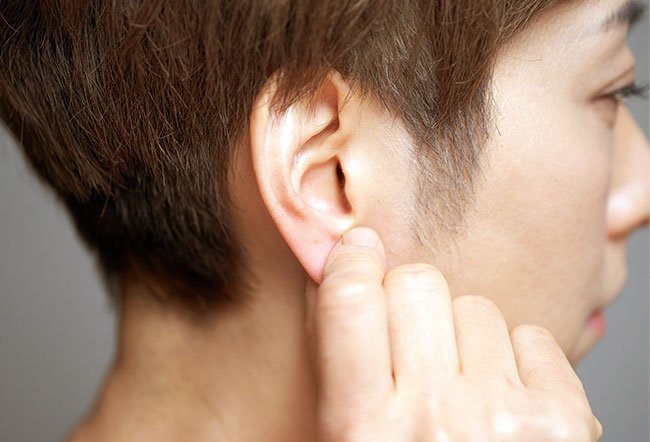Can I Pop a Cyst on My Earlobe?

An earlobe cyst resembles a pimple or benign mass in or around the ear. Cysts are noncancerous growths that contain air or fluids and can be present on any part of the body involving the scalp, behind the ear, around the ear, etc.
Earlobe cysts are more common in middle-aged individuals. Since they are benign (noncancerous) and don’t cause any pain, treatment is not always needed. Doctors advise avoiding popping them because doing so increases the risk of infection and scarring. Individuals should seek medical or surgical help if a cyst is causing pain or suddenly increases in size.
How does an earlobe cyst develop?
Earlobe cysts may be in one of two forms:
- Epidermoid cysts: meaning they are made up of epidermal cells
- Sebaceous cysts: accumulated secretions of sebaceous glands
True epidermoid cysts are caused by damage to the hair follicles or outer layer of the skin (epidermis). The cells, instead of shedding, are retained and form a cyst.
Sebaceous cysts can develop if the sebaceous gland or its duct (the skin gland that produces sebum and oil) becomes damaged or blocked due to a trauma to the area, such as by repeated friction or scratching.
What causes an earlobe cyst?
In most cases, an earlobe cyst is idiopathic (that is without any known reason).
Risk factors for an earlobe cyst may include:
- Age: Most commonly seen after puberty
- Genetics: More common in individuals with a positive family history of diseases such as Gardner’s syndrome
- Repeated injury: Leads to abnormal healing and misdirected growth of the epithelium, forming cysts
- History of acne around the ear
- Malignant conditions such as basal cell carcinoma, squamous cell carcinoma and melanoma
How to identify an earlobe cyst
The following features can be associated along with an earlobe cyst:
- Bump/elevation on the skin around the earlobe
- A firm and round cyst with the same appearance as that of the skin around it
- Sometimes, it can be filled with pus (if infected) and cause symptoms such as redness, pain and tenderness
What are the associated complications?
Possible complications of an earlobe cyst include:
- Infection in the cyst
- Bursting of the cyst
- A cancerous cyst (very rarely)
What precautions should I take?
Individuals with an earlobe cyst may take the following precautions:
- Never try to squeeze the cyst.
- Always try to keep the affected area clean to avoid any spread of infection.
- If already infected, see a doctor as soon as possible.
- To ease the drainage of an infected cyst, use warm compresses.
What are the treatment options available?
Treatment options for an earlobe cyst are as follows:
- Mostly, cysts remain small and benign and don’t cause many problems, so nothing has to be done.
- However, if the size is large or keeps changing frequently, then the doctor might suspect malignancy and will take a biopsy from that area.
- In very few cases where the cyst has been infected and is filled with cheese-like pus, the doctor will perform drainage with surgical removal and application of antibiotics under local anesthesia if required.
- In extreme cases of inflammation and pain, the doctor can prescribe steroids to reduce the inflammation.
Earlobe cysts are usually presented in middle age and are benign. Medical and surgical help is not required in the majority of the cases but can be taken when the cyst is causing pain, is infected or increases in size.
